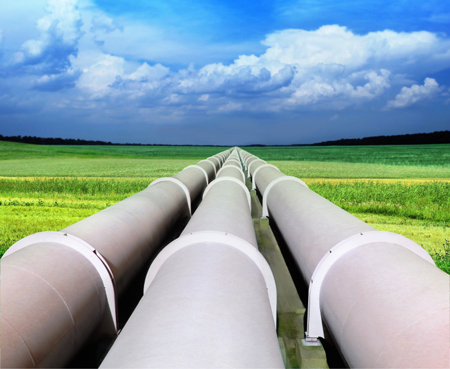
(Photo Credit: iStockphoto.com)
The US- and ADB-sponsored Turkmenistan-Afghanistan-Pakistan-India (TAPI) gas pipeline project is as much about the political stability of Afghanistan as it is about energy security for the partner countries. Yet, it continues to evoke scepticism among analysts. Much of this scepticism hinged on finding financiers to underwrite a project which would transit the turbulent regions of Herat and Kandahar in Afghanistan as well as Balochistan (Quetta) and Multan in Pakistan.
Now, another factor has emerged which has the potential to further jeopardise the beleaguered project. Recent reports of a rival pipeline project being negotiated between China, Turkmenistan and Afghanistan have emerged. This project proposes to carry Turkmen gas to China through northern Afghanistan and Tajikistan, raising concerns that it may render TAPI a non-starter, akin to the manner in which TAPI played spoiler to the Iran-Pakistan-India (IPI) pipeline project.
On 6 and 8 June 6 2012, on the sidelines of the SCO summit meeting in Beijing, Afghan President Hamid Karzai met with Chinese President Hu Jintao and China National Petroleum Corporation's (CNPC) head Jiang Jiemin and discussed the proposal along with other issues. According to reports in the Chinese media, CNPC offered to conduct a technical and economic feasibility study for the proposed project on Afghan and Tajik territories. That the route for the proposed pipeline seeks to avoid the troubled Pashtun-dominated areas in Afghanistan--seen as one of the biggest hurdles for the TAPI project--would make it more attractive for the financiers.
While actual volumes of the proposed pipeline were not discussed or disclosed, it was agreed that a memorandum of understanding (MoU) would be signed when a CNPC delegation visits Kabul to discuss the proposal in greater detail, along with oil and gas exploration possibilities in Afghanistan's Amu Darya basin, for which an agreement was signed between the Afghan Ministry of Mines and CNPC in December 2011.
On returning to Kabul, President Karzai reportedly told Wahidullah Shahrani, the Minister of Mines, to prepare a framework agreement on cooperation with the CNPC and to set up a Chinese-Afghan joint working committee on these projects. CNPC and the Turkmen state firm, Turkmennebitgaz, also signed a framework agreement to increase ongoing gas deliveries to China to 65 billion cubic metres (bcm) from the current 30 bcm per annum by 2014.
The gas would be sourced from Turkmenistan's Bagtyyarlyk gas field and possibly from sections of the South Yolotan field. This would, presumably, be the source for the proposed pipeline project as well. Interestingly, the additional Turkmen gas supply to China is expected to commence in 2014, the year TAPI is expected to begin construction.
The timing of the proposal for the new Turkmen-Afghan-China pipeline is intriguing, setting off speculation about whether it was being conceived to stymie TAPI or is part of China's strategy to guard against any extra-regional influence in Central Asia, including on the region's energy resources, which, Beijing wants to garner for itself to offset its dependence on the Strait of Malacca. Given that China has already contracted to buy additional gas from Turkmenistan would suggest that the project is motivated by the former consideration.
What is important, however, is that the proposed pipeline seeks to exclude both Pakistan and India, hailed as potential markets for Central Asian energy resources. This is not the first time that China has played spoiler in energy projects originating in a Central Asian state. For example, in 2009, when an EU-backed consortium was working on the Nabucco pipeline to reach Turkmen gas reserves from the west as an additional source, CNPC inaugurated the Turkmen-China gas pipeline, thereby jeopardising Nabucco's viability.
With the possibility of a rival pipeline transiting Afghanistan, several factors will have to be taken into consideration.
This article was published by the Institute for Defence Studies & Analyses on 31 July 2012. The author is a Research Fellow at IDSA, New Delhi.
BY: Shebonti Ray Dadwal, IDSA